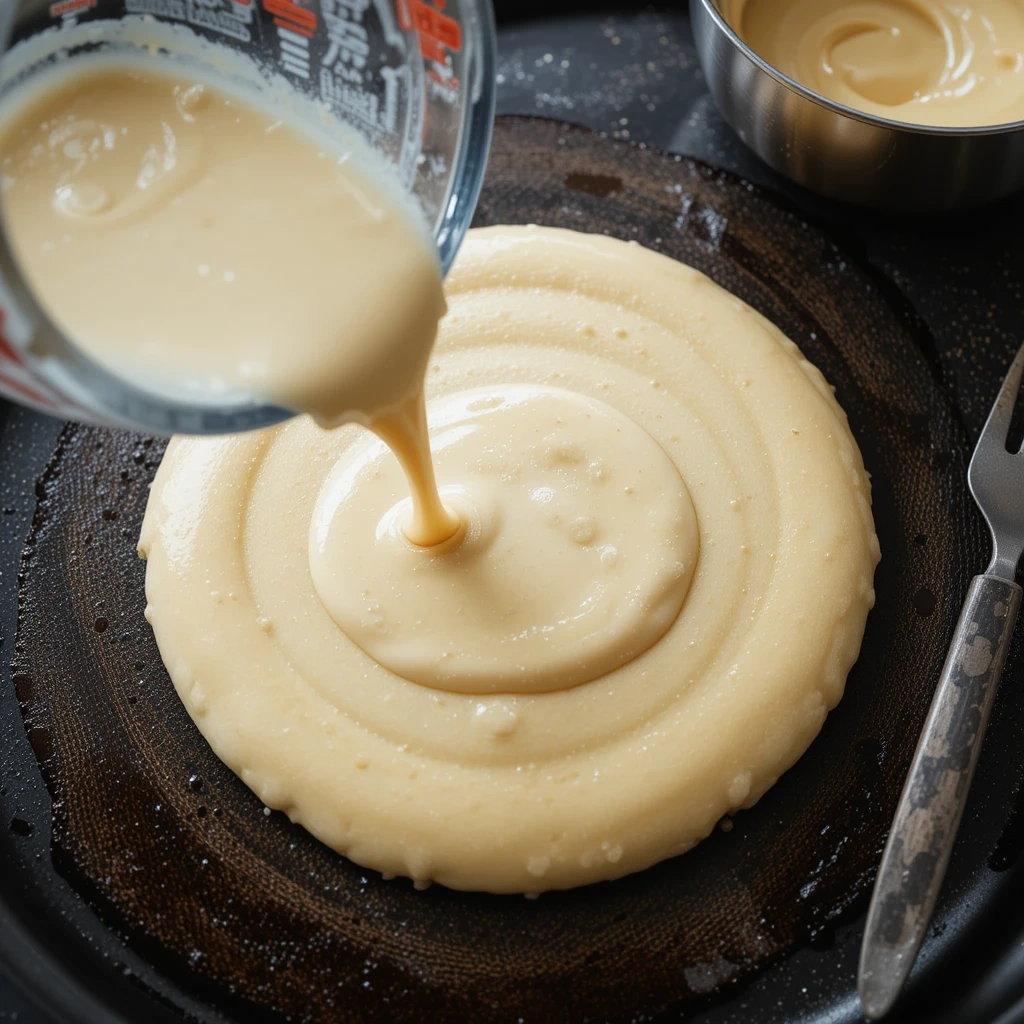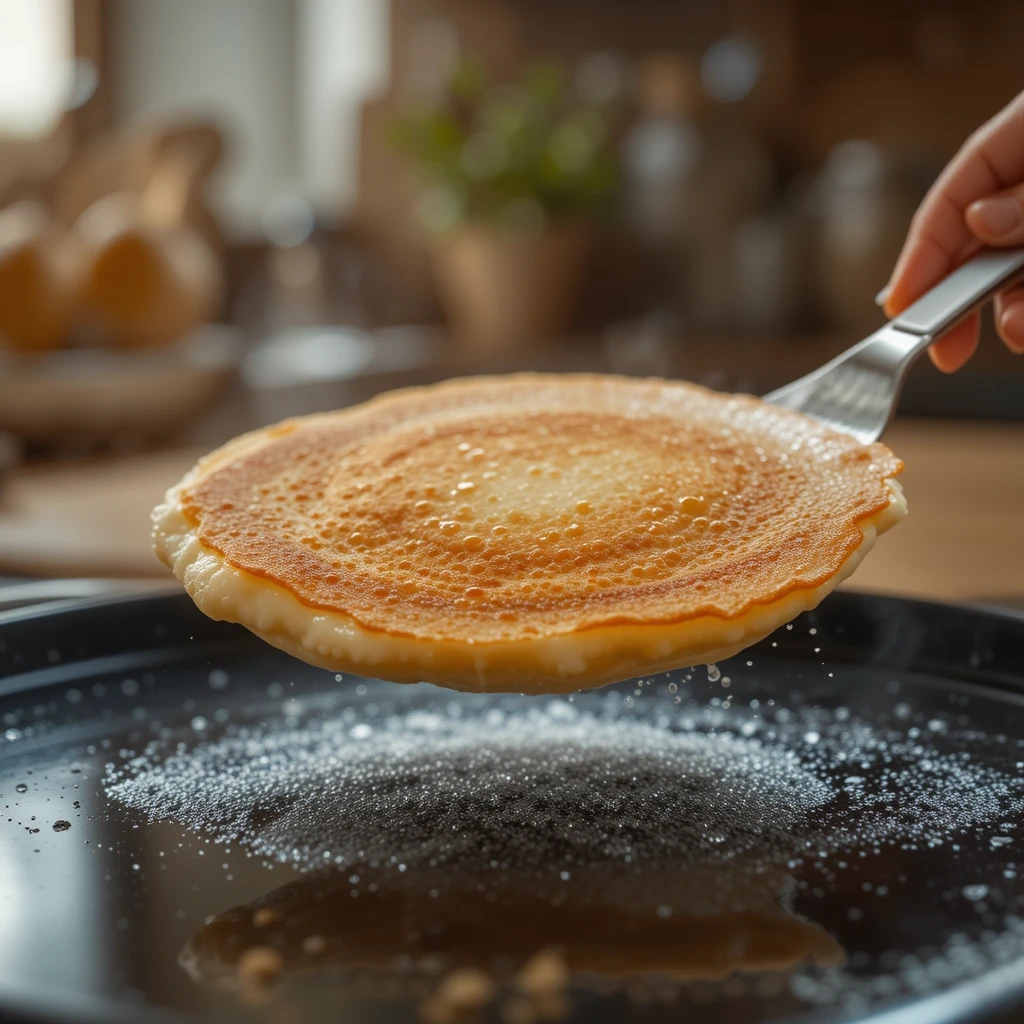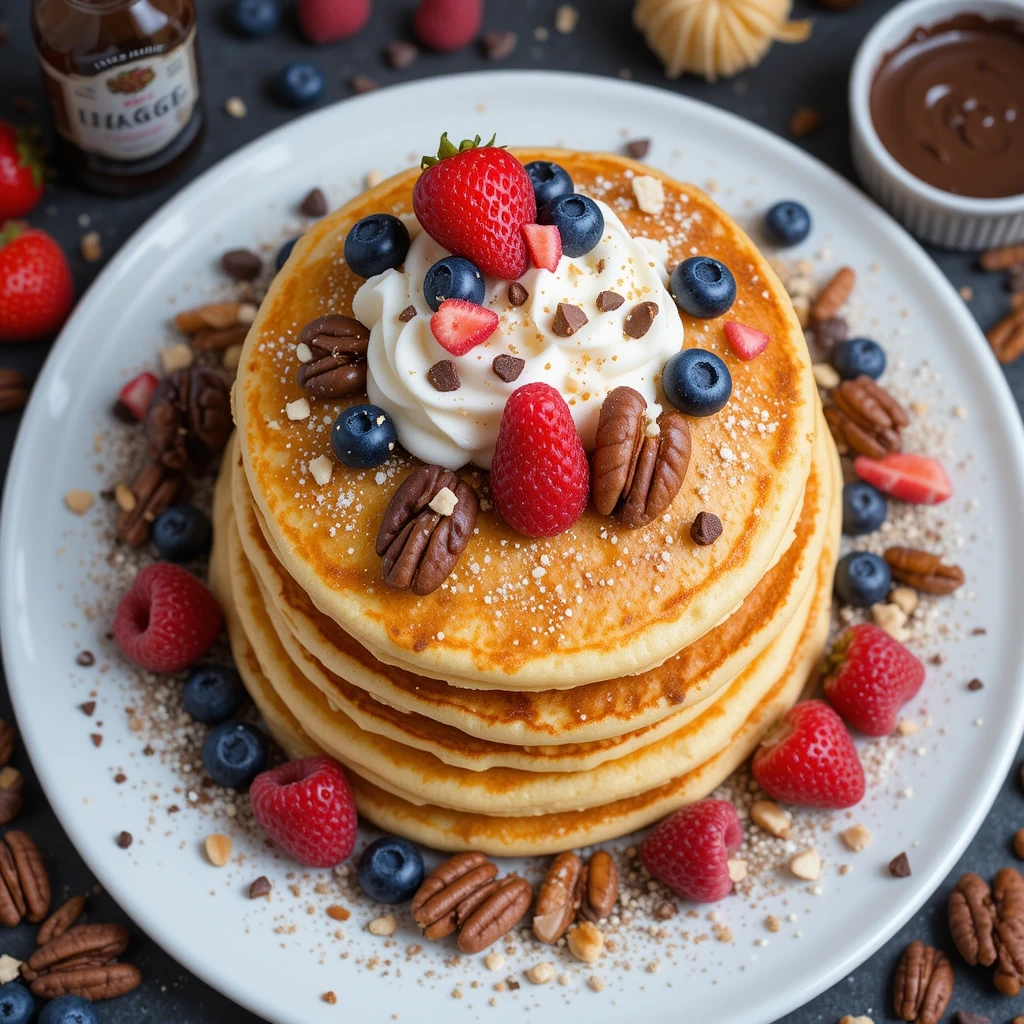Pancakes are a beloved breakfast staple around the world, offering a versatile canvas for creativity and indulgence. Whether you’re a seasoned chef or a culinary novice, crafting the perfect pancake is an art that requires attention to detail and a passion for quality ingredients. From the delicate balance of flour, eggs, and milk to the art of flipping and the endless possibilities of toppings, pancakes invite us to explore flavors and textures that elevate our morning routines. Whether you prefer classic buttermilk pancakes or innovative variations like whole wheat or gluten-free options, the journey to pancake perfection is a delightful adventure that combines tradition with innovation.
When it comes to pancakes, the ingredients you choose can make all the difference. I remember the first time I attempted to make pancakes from scratch. I was excited but didn’t pay much attention to the quality of my ingredients.
I grabbed whatever I had in my pantry, which included some old flour and a generic brand of baking powder. The result? Flat, sad pancakes that tasted more like cardboard than breakfast.
Since then, I’ve learned that using fresh, high-quality ingredients is essential for achieving pancake perfection. Flour is the backbone of any pancake recipe, and I’ve found that all-purpose flour works best for a light and fluffy texture. However, experimenting with whole wheat or even gluten-free options can yield delicious results too.
Don’t forget about the importance of eggs; they add richness and help bind the batter together. And let’s not overlook the role of milk—whether you prefer whole, almond, or oat milk, it can significantly affect the flavor and consistency of your batter. I’ve even tried buttermilk on occasion, and let me tell you, it takes pancakes to a whole new level of deliciousness.
Table of Contents
The Art of Mixing and Pouring Pancake Batter
Mixing pancake batter is an art form in itself. I used to think that the more I mixed, the better my pancakes would turn out. However, I quickly learned that overmixing can lead to tough, chewy pancakes.
Now, I take a gentle approach, combining the dry and wet ingredients until just blended. Having some lumps is acceptable; they will vanish as you cook. This technique has transformed my pancakes from dense discs into fluffy clouds of goodness.
Pouring the batter is another crucial step that I’ve come to appreciate. I’ve experimented with different pouring methods, from using a ladle to a squeeze bottle. Each has its advantages, but I’ve found that a ladle gives me the most control over portion size and shape.
I like to pour my batter onto a hot griddle in a circular motion, which helps create those perfect round pancakes we all love. And if you’re feeling adventurous, try varying the size of your pancakes—mini pancakes can be just as delightful as their larger counterparts!
Indulge in a delectable Xango Dessert with this recipe from Veibrant Recipes. Originating from Brazilian cuisine, this deep-fried pastry is filled with a creamy, sweet cheese mixture, offering a delightful contrast between its crispy exterior and gooey interior. Perfect for those seeking a unique and indulgent treat.veibrantrecipes.com

Tips for Flipping Pancakes Like a Pro
Flipping pancakes can be intimidating, especially when you’re trying to achieve that perfect golden-brown color. I remember my early pancake-making days when I would nervously hover over the skillet, waiting for the right moment to flip. The key is patience; you’ll know it’s time when bubbles start forming on the surface and the edges look set.
I’ve learned to use a wide spatula for flipping, which provides better support and reduces the risk of pancake breakage. One trick that has served me well is to practice flipping with a little confidence. Instead of hesitating, I give my spatula a quick flick of the wrist to send the pancake soaring into the air—most of the time!
It’s all about timing and technique. If you do happen to drop a pancake or two (trust me, it happens), don’t fret! Just scoop it up and keep going; breakfast is still on its way.
Craving a classic breakfast favorite? The Good Old-Fashioned Pancakes recipe from Allrecipes is a time-tested gem, cherished for its simplicity and delightful flavor. Crafted with basic pantry staples like flour, baking powder, sugar, milk, butter, and eggs, this recipe yields light and fluffy pancakes that have garnered over 15,000 five-star reviews. It’s a beloved choice for those seeking a homemade breakfast that evokes nostalgia and comfort.Allrecipes+1Allrecipes+1

Creative Toppings and Fillings to Elevate Your Pancake Game
| Topping/Filling | Description |
|---|---|
| Fresh Berries | Delicious and colorful addition to pancakes |
| Chocolate Bits | For a delightful and decadent variation |
| Cream that is whipped | Delicate and gentle topping for an opulent conclusion |
| Maple Syrup | Classic and timeless pancake topping |
| Chopped Nuts | Crunchy and nutty addition for texture |
| Coconut Flakes | For a tropical and exotic flavor |
Once you’ve mastered the art of making pancakes, it’s time to get creative with toppings and fillings. I love experimenting with different flavors and textures to elevate my breakfast experience. I love pairing fresh berries with a splash of maple syrup and a spoonful of whipped cream.
The burst of sweetness from the berries paired with the rich syrup creates a delightful contrast that keeps me coming back for more. But why stop at traditional toppings? I’ve discovered that adding fillings directly into the batter can take pancakes to another level.
Chocolate chips are a classic choice, but I’ve also tried incorporating peanut butter or even banana slices into the mix. Every mouthful is a tasty revelation!And if you’re feeling adventurous, consider savory options like crumbled bacon or cheese for a unique twist on this breakfast staple.

Perfecting the Cooking Process: Temperature and Timing
Cooking pancakes is all about finding that sweet spot between temperature and timing. In my early attempts, I often ended up with burnt outsides and raw insides because I didn’t pay attention to my heat settings. Now, I’ve learned that medium heat is usually ideal for cooking pancakes evenly without scorching them.
It took some trial and error, but once I found that balance, my pancakes transformed into golden-brown masterpieces. Timing is equally important; each pancake typically takes about two to three minutes per side. I find it helpful to set a timer to prevent getting sidetracked while flipping or pouring additional batter.
This way, I can focus on perfecting each pancake without worrying about burning them. And if you’re cooking multiple pancakes at once, keeping them warm in a low oven while you finish up can ensure that everyone enjoys their breakfast hot off the griddle.
Advance Pancake Preparation: How to Store and Reheat
One of the best things about pancakes is their versatility when it comes to meal prep. I often make a big batch on weekends so that I have breakfast ready for busy weekdays. After cooking, I let them cool completely before stacking them with parchment paper in between each pancake to prevent sticking.
Then, I store them in an airtight container in the fridge for up to three days or freeze them for longer storage. Reheating pancakes is a breeze! When I’m ready to enjoy them again, I simply pop them in the toaster or microwave for a quick warm-up.
If using the microwave, I place a damp paper towel over them to keep them moist—nobody likes dry pancakes! This method has saved me countless mornings when time is tight but deliciousness is still a priority.
5 Common Mistakes to Avoid and Their Solutions
Even seasoned pancake makers can fall victim to common mistakes along the way. One mistake I made early on was not preheating my skillet properly, which resulted in unevenly cooked pancakes. Now, I always make sure my griddle is hot enough before pouring in the batter; this ensures that each pancake cooks evenly from the start.
Another pitfall is using expired baking powder or baking soda, which can lead to flat pancakes. To avoid this, I regularly check expiration dates and keep my leavening agents stored in a cool, dry place. Additionally, measuring ingredients accurately is crucial; too much flour can lead to dense pancakes while too little can make them fall apart.
Investing in a good set of measuring cups has made all the difference in my pancake-making journey. In conclusion, making perfect pancakes is an art that combines quality ingredients, careful mixing, and creative flair. With practice and attention to detail, anyone can elevate their breakfast game and enjoy delicious stacks of fluffy goodness any day of the week!
FAQs
What are the essential ingredients for making perfect pancakes?
The essential ingredients for making perfect pancakes include flour, baking powder, salt, sugar, eggs, milk, and butter. To achieve the desired texture and flavor in your pancakes, these ingredients are vital.
Can you provide advice on how to mix and pour pancake batter effectively?
When mixing pancake batter, it’s important to avoid over-mixing, as this can result in tough pancakes. Rather, softly stir the batter until it is just combined. Use a ladle or measuring cup to pour the batter onto the griddle or pan for uniform pancake sizes.
How can I improve my pancake flipping technique?
For expert pancake flipping, allow bubbles to form on the surface before flipping. Utilize a spatula to gently lift and turn the pancake in one seamless motion.. Avoid pressing down on the pancake while it’s cooking, as this can deflate it.
What are some creative toppings and fillings to elevate my pancake game?
Some creative toppings and fillings to elevate your pancake game include fresh fruit, chocolate chips, nuts, whipped cream, flavored syrups, and even savory options like bacon or cheese.Explore different mixes to identify your preferred choice.
What is the best temperature and timing to cook perfect pancakes?
Pancakes should be cooked at a medium heat setting, with each side taking about 2-3 minutes to ensure they are thoroughly cooked without getting burnt.
How can I make pancakes ahead of time and store them for later?
To make pancakes ahead of time, allow them to cool completely before stacking them with parchment paper in between each pancake. Store the stack in an airtight container or resealable bag in the refrigerator for up to 2 days, or in the freezer for up to 1 month.
What typical blunders should be avoided during pancake preparation?
Some common mistakes to avoid when making pancakes include over-mixing the batter, using the wrong cooking temperature, flipping the pancakes too early, overcrowding the pan or griddle, and not properly greasing the cooking surface. Solutions to these mistakes include being gentle with the batter, adjusting the heat as needed, waiting for the right moment to flip, cooking in batches, and using enough butter or oil to prevent sticking.

pancakes
Ingredients
- Flour all-purpose recommended
- Baking powder
- Salt
- Sugar
- Eggs
- Milk whole, almond, or oat
- Butter for cooking
- Optional: Vanilla extract buttermilk
- Pros:
- Easy to customize with different flours and toppings.
- Relatively quick to make perfect for busy mornings.
- Freezes well for meal prep.
- A versatile base for both sweet and savory additions.
- A family favorite.
- Cons:
- Overmixing can lead to tough pancakes.
- Requires attention to temperature to avoid burning.
- Can be high in calories depending on toppings.
- Requires fresh ingredients for the best results.
Instructions
- Gather your ingredients.
- In a bowl, combine flour, baking powder, salt, and sugar.
- In a separate bowl, whisk together eggs and milk.
- Gently pour the wet ingredients into the dry ingredients and stir until just combined. A few lumps are okay.
- Heat a lightly oiled griddle or frying pan over medium heat.
- Pour 1/4 cup of batter onto the hot griddle for each pancake.
- Cook for 2-3 minutes per side, or until golden brown and cooked through. Look for bubbles forming on the surface as an indicator to flip.
- Serve immediately with your favorite toppings.
- Enjoy!

